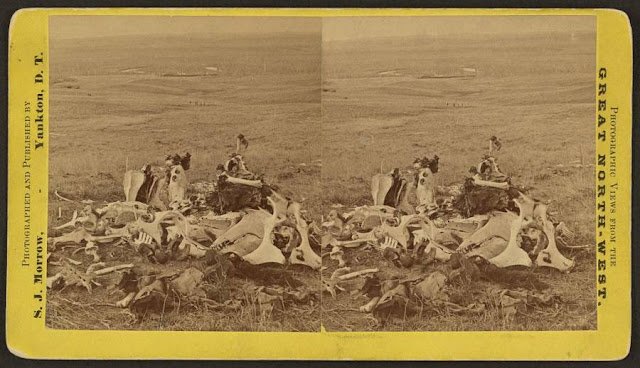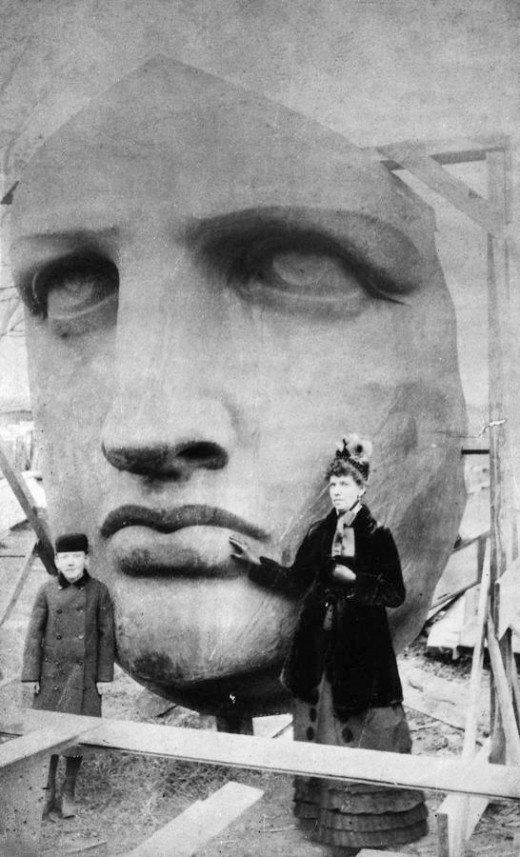__________
Concluding the list of Rare Historic Photos from:
The remaining photos have a US focus but are of interest from a historical perspective nonetheless . . .
__________
The Wounded Knee Massacre
Among the countless clashes between U.S. settlers and Native Americans, the Wounded Knee Massacre stands apart to this day.
On December 29, 1890, U.S. troops followed orders to disarm Native Americans they'd forcibly relocated to a camp near Wounded Knee Creek, South Dakota. Accounts vary, but most say a scuffle started after one Lakota refused to give up his rifle. In the end, more than 400 troops killed as many as 300 Lakota men, women, and children, and wounded another 50. The regiment then buried the Lakota in a mass grave (pictured).
__________
The Battle Of Little Bighorn
Like Wounded Knee, the Battle of Little Bighorn retains a special place in the history of settlers and Native Americans. Fought near the Little Bighorn River in southern Montana on June 25 and 26, 1876, this U.S. defeat at the hands of the Lakota and accompanying tribes became famous for Custer's Last Stand, the ill-fated charge of troops led by George Custer, resulting in his death and the death of most of his men.
Pictured: Bones at the site of Custer's Last Stand in the aftermath of the battle.
__________
The Klondike Gold Rush
The Klondike Gold Rush is such a rough-and-tumble chapter in U.S. history that it's strange to think that cameras actually documented it. Yet of the approximately 300,000 people who flocked to northwestern Canada in search of gold between 1896 and 1899, a few owned and brought cameras.
However scarce, these images provide a glimpse into a period when dysentery and malaria were the norm and food was so scarce that salt was worth its weight in gold.
Pictured: Miners at work, circa 1899.
__________
The California Gold Rush
Even more remarkable than the images from the Klondike Gold Rush are those of the famed California Gold Rush 50 years before.
This mass migration likewise saw about 300,000 settlers head to California in a move that would shape American history far more than you'd think. Indeed, if not for the influx of people, the accompanying development of San Francisco, the Transcontinental Railroad, and the state of California itself might very well look a lot different.
Pictured: A prospector pans for gold in the American River of California's Sacramento Valley, circa 1850.
__________
Completion Of The Transcontinental Railroad
In today's world of interstate highways, instant communication, and drone delivery, it's almost impossible to understand the earth-shaking significance of the day workers completed America's first transcontinental railroad at Promontory Summit, Utah on May 10, 1869 (pictured).
It's likewise hard to believe that a moment so antiquated was actually captured — with terrific clarity, no less — on film.
-----oOo-----
Some additional amazing historical photographs and text
from the same website . . .
__________
The Bomb, From The Ground
Popular photos of the Hiroshima and Nagasaki bombings often capture the event from an aerial perspective.
While this perspective makes for a powerful image, it obviously doesn't capture the blasts' terrifying scope to those on the ground at the time. This is what makes this photo of the atomic cloud rising over Nagasaki on August 9, 1945 so devastating. The blast pictured here would soon kill at least 75,000 people.
__________
The Last Lifeboat Off The Titanic
A handful of surviving images depict the Titanic on the water, just days before the ship's tragic accident on April 15, 1912. Images of survivors' rescue — like the one here, depicting the last lifeboat evacuating the ship — are less common.
__________
Unboxing The Statue Of Liberty
Much like the Eiffel Tower, it's hard to think of the Statue of Liberty as anything other than a timeless colossus. It was of course a statue built by human hands, and one which France shipped to the States in 214 crates and had an assembly cost of about $10 million (adjusted for inflation).
On June 17, 1885, those crates reached the U.S. and the great unboxing began.
Pictured: The statue's face not long after removal from its crate.
__________
The San Francisco Earthquake Of 1906
With at least hundreds more deaths than Pearl Harbor, the San Francisco earthquake of 1906 remains the second deadliest disaster in U.S. history. The quake began on the morning of April 18, and by the time it ended, the quake had levelled about 90 percent of the city, left 225,000 homeless, and at least 3,000 dead.
Yet amid that pandemonium, at least one photographer managed to capture a stark, evocative image that reveals the $10 billion destruction.
-----oOo-----










No comments:
Post a Comment
Note: Only a member of this blog may post a comment.